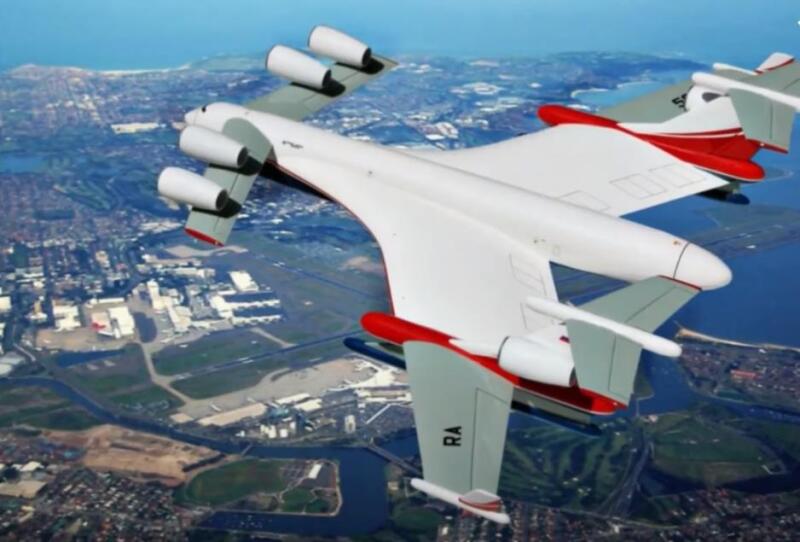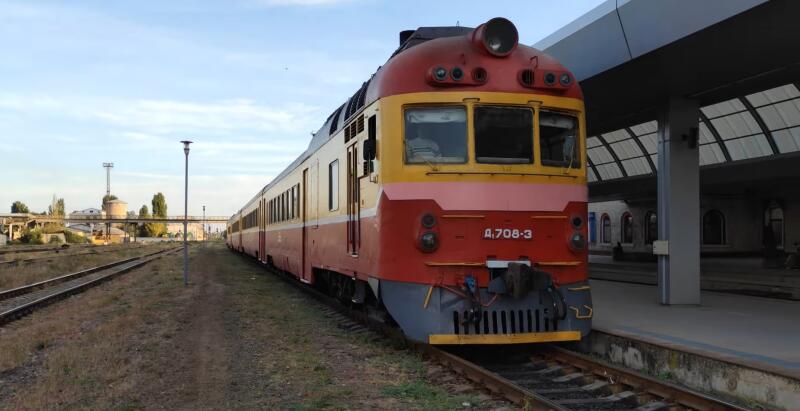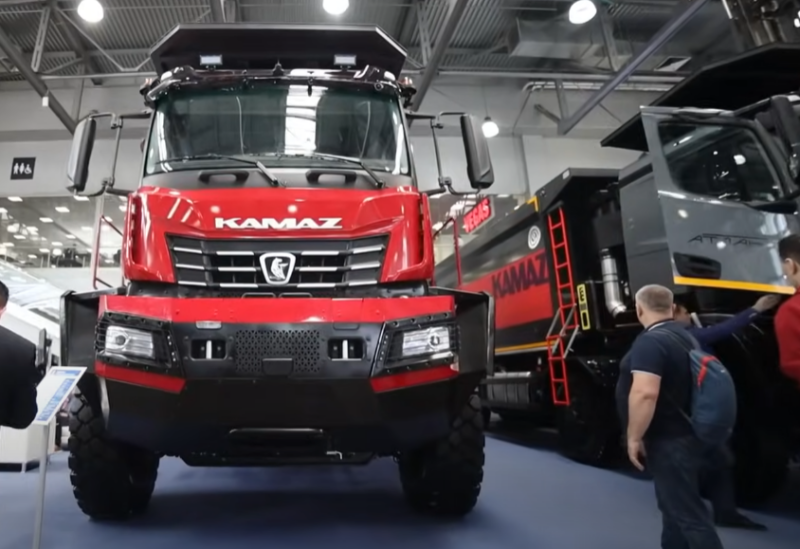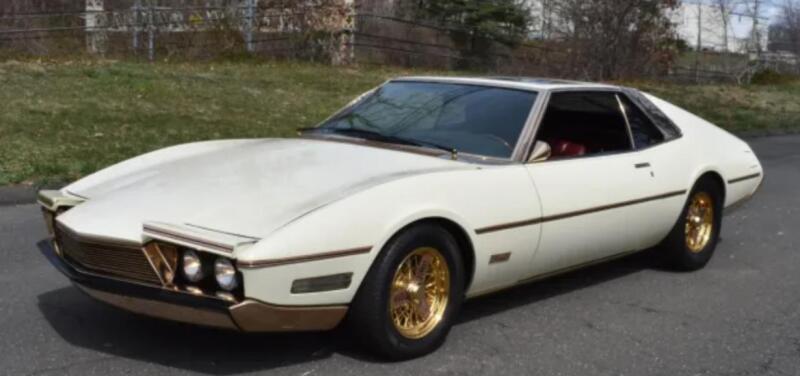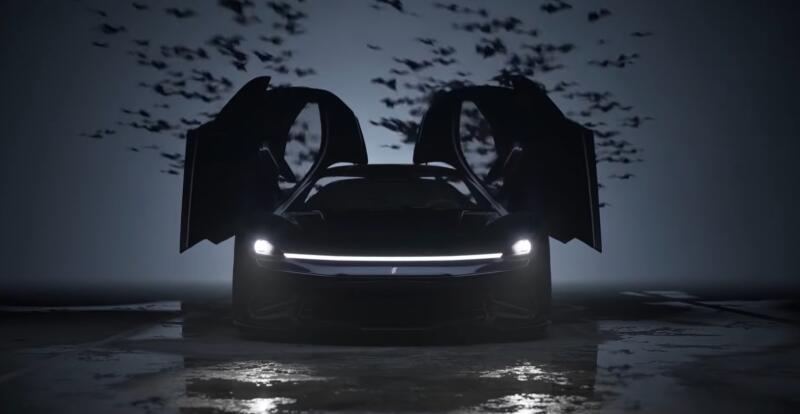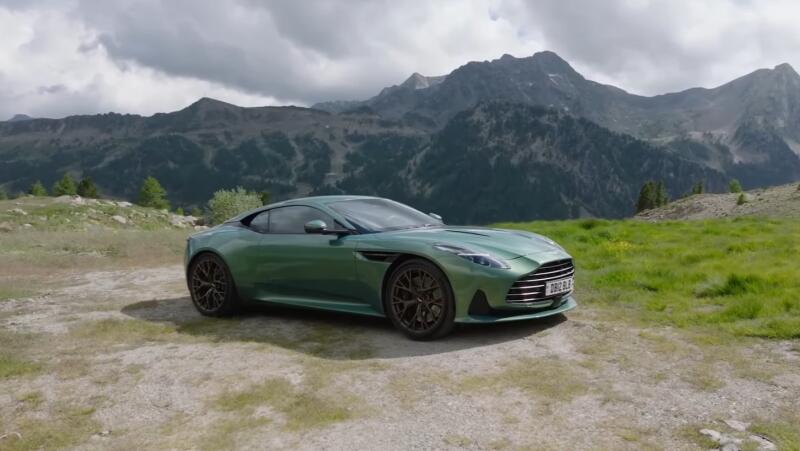The beginning of the development of the Be-2500 ("Neptune") dates back to Soviet times, the end of the 80s. This is a "classic" ekranolet designed for the transportation of goods, which was designed in Taganrog, Berievsky ASTC. It was assumed: the machine will be able to be based in the country's largest seaports. The main difference between the Be-2500 and similar ones is its carrying capacity. The super-heavyweight could “plug in the belt” even the famous “Mriya” (An-225), because it took on board up to 1000 tons, which is 5 times more than this transport aircraft could lift.
 Inside the "small" An-225. Photo: YouTube.com
Inside the "small" An-225. Photo: YouTube.comThere was another important plus: the ekranolet belonged to non-aerodrome-based aircraft: the role of the runway could be played by a flat piece of land or the water area of a suitable reservoir.
The unique "abilities" of the ekranolet interested the military. "Neptune" could transport an entire division at a time for 16 thousand km!
The Be-2500 was conceived as a civilian ship designed for transatlantic container cargo, rescue of people on the water, work in the structure of the Ministry of Emergency Situations, exploration of minerals on the ocean and sea shelves.
About construction
The scheme of the machine is a "flying wing". This makes it possible to use the air screen, which is compressed under it. The vessel is capable of flying over any surface at a height of several meters. Gliding on the redan and the rear of the center section provided a special interconnected arrangement of the fuselage and wing. It was assumed that the role of the power plant will be played by six Rolls-Royce Trent DTRD engines, providing 490 kN of thrust. Domestic aircraft engines DTRD NK-116 were also considered. They were developed in 1994 at NPP Trud (Samara). And one more option - NK-62M.
 The main version of the layout of power units. Photo: YouTube.com
The main version of the layout of power units. Photo: YouTube.comThe launch from the water surface was carried out thanks to the blower. What is this system? Exhaust gases from the power units located in the front of the vessel go under the wing. A closed space is formed there, in which a gas cushion is formed. She helps the ekranolet to break away from the water. Also, blowing makes the descent and splashdown of the vessel safer, which is associated with a constant pitch angle. This means that the participation of the pilot will be minimal.
 View of the giant from below (the chassis is visible). Photo: YouTube.com
View of the giant from below (the chassis is visible). Photo: YouTube.comThe design was supposed to use a retractable chassis. But it should only be involved only when flying from one airfield to another for, for example, repair or maintenance. Main calculated technical parameters:
✅ wingspan, length, height - 125,51, 115,5, 29,12 m
✅ takeoff weight - 2500 tons
✅ load capacity - 1000 tons
✅ speed in airplane mode (using the screen) - 770 (450) km/h
✅ ceiling - up to 10 thousand m
✅ range - up to 15800 km
As conceived by the designers, "Neptune" had to be able to independently advance to the hydraulic escape, which could serve, for example, a sandy sloping shore. In parallel, work was underway to create a heavier "descendant" of the Be-5000. This giant was supposed to lift five thousand tons into the air. It was assumed that its power plant would consist of 23 engines.
And what about competitors in the West?
They didn't sleep either. The Americans, a little later than their Soviet colleagues, began to develop their own "heavyweight". It was named Pelican ULTRA (project - from Boeing). The ship was intended for the military: the operation in Iraq showed that it takes at least a month to transfer a division in the usual way. And the use of the "Pelican" made it possible to reduce this period to five days. But, given the structural difficulties, the Americans planned to make their heavyweight no earlier than 2015. Its carrying capacity exceeded the capabilities of the Neptune and amounted to 1200 tons. It was not excluded that the ekranolet would be used for civilian purposes. However, the project remained on paper. The only realized idea for a flying boat for carrying heavy loads is the Hughes H-4 Hercules.
 The American aircraft managed to fly. Photo: YouTube.com
The American aircraft managed to fly. Photo: YouTube.comThe ship was designed in 1947, belatedly. The car was supposed to transfer military cargo from the United States to Europe. However, World War II had already ended and only one copy was built.
The economic component of the Be-2500
Even if we take into account the difficult 90s for the country, it is unlikely that the Neptune could have been built: at least at that time. The cost of the project was estimated at 10 billion "green". For comparison: in order to resume production of the serial Ruslan (An-124), "only" 560 million dollars were required.
 An-124 is an order of magnitude cheaper than an ekranolet. Photo: YouTube.com
An-124 is an order of magnitude cheaper than an ekranolet. Photo: YouTube.comThe second obstacle is the need for high-class specialists who are able to find new approaches, original engineering solutions that generate non-standard ideas. And the Taganrog Design Bureau, alas, could not boast of such personnel. Technical characteristics also could not be called good. For example, a heavy ekranoplan was extremely clumsy, and the air currents it created could easily “blow away” a nearby small sea vessel. Fuel consumption in airplane mode was about twice as high as that of a conventional liner.
 From the start of design work to the construction of a vessel of this type, 15-20 years pass. Photo: YouTube.com
From the start of design work to the construction of a vessel of this type, 15-20 years pass. Photo: YouTube.comThe project does not even mention anything about the cost of maintenance. And this is understandable, because it can become "golden". You shouldn't even stutter about the comfort inside the ekranolet: the noise level from six (on the Be-5000 - 23) would go off scale for all acceptable standards.
And one more thing - safety. When taking off in screen mode, the Neptune would have to sharply and much increase power at the last moment of the takeoff run in order to increase speed. Any obstacle that arose on the trajectory - it doesn’t matter, a boat, a boat, a whale or a dolphin (you never know what jumps out of the sea), would inevitably lead to the catastrophe of the clumsy Neptune.
On the other hand, in the event of a malfunction in the event of a flight over the sea, ocean, a hybrid vessel is safer than an aircraft, since it can land on water.
And yet: do ekranolet have no future?
Prospects
They are. Another thing is the form in which projects will be created. It is obvious that the construction of heavyweights today is not economically feasible. But small ekranolet with dimensions of the Il-76 and a carrying capacity of up to 100 tons would be quite useful. For example, for the delivery of goods to polar stations. Or operational evacuation of their service personnel in case of danger, necessity.
 Small vehicles are more likely to survive in harsh economic realities than heavyweights. Photo: YouTube.com
Small vehicles are more likely to survive in harsh economic realities than heavyweights. Photo: YouTube.comSumming up, we can conclude that ekranolet has a future. Although in the near future the state does not intend to deal with such aircraft. In the approved program for the development of the aviation industry until 2025, there is no mention of the Be-2500 or similar ships. To implement a project, you need a good school with high-class specialists who are not afraid of non-standard solutions, and a courageous investor who takes the risk of investing in such an event.
There have already been attempts to resume the project. In 2018, the head of the Taganrog ASTC, Yury Grudinin, said that the Be-2500 project was at the stage of "sketch design". The designers are discussing the performance characteristics of the ekranolet and are even looking for potential customers. And the Central Institute of Zhukovsky blew a model of a heavy hybrid in a wind tunnel: the tests were successful - the car can fly. So the concept of the ekranolet still excites the minds of aviation engineers and it remains to be hoped that someday there will be a positive result.
